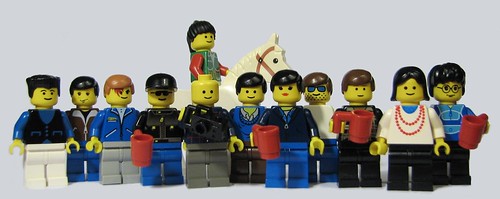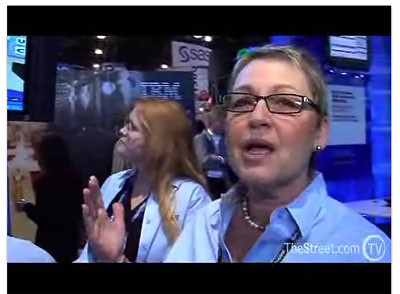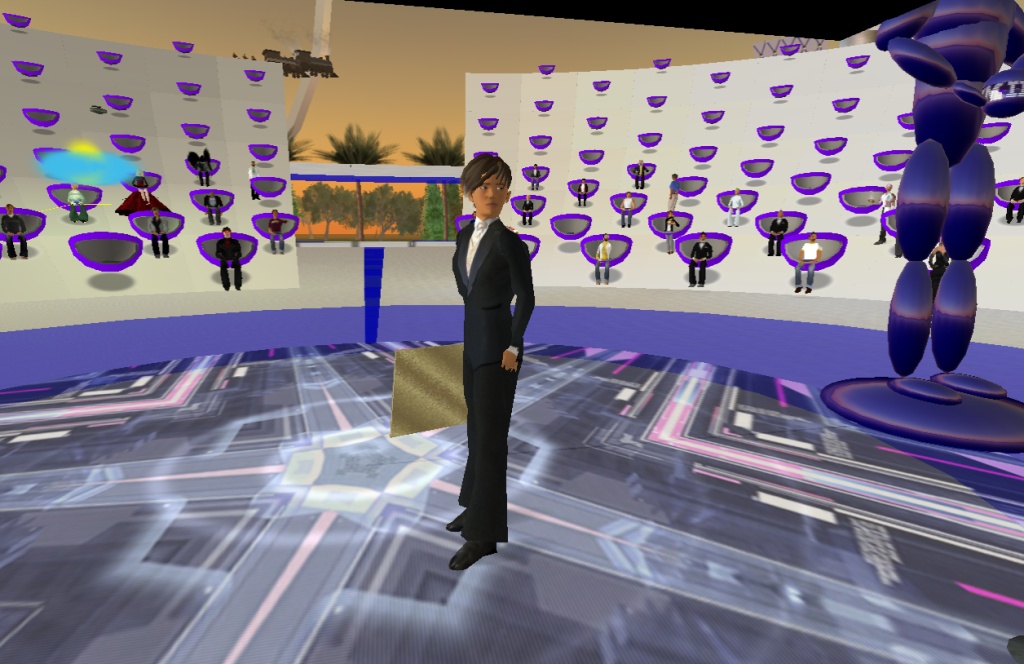I moderated a panel on virtual worlds, games and social networks at the Virtual Worlds 2008 conference today. I recently put out a request for questions here on Eightbar, and got a great response. Here are my (very poor and woefully incomplete) recollections of the event. I’m hoping to get a copy of the audio from the event organizers, which will help me flesh this out For now…
My three co-panelists introduced themselves
- Christian Lassonde – President & Co Founder, Millions of Us
- Susan Panico – Senior Director, Playstation Network, Sony
- Sean Ryan – CEO, Meez
Susan described the attraction of worlds created “for gamers by gamers” so I pressed her on whether Home is going to include user generated content. (When Corey Bridges spoke at SXSW, he mentioned that in the late 90s, if you’d asked people who will be the biggest content producers on the web, people might have guessed ‘Disney’, or other big entertainment brands, and that this turns out not to have been the case. In quite a big way. The creators of the web are everyday people. Does the mentality of user-generated content have any space in the world of Home? (I also mentioned, in a hat-tip to timdp’s question that she should explain it in terms of what will make Home ‘sticky and compulsive’). Susan conceded that while the experiences would be participatory and social, the content is not going to be user-generated. Christian later revealed that Millions of Us are working with Sony on Home (which was new news to me!)
I asked a very summary version of
David Orban’s question (I probably didn’t do it justice, but I pointed out that virtual worlds and games are generally synchronous and realtime, while web based social networks are largely asynchronous. What implications does this have for the future of virtual worlds and social networks?) Everyone agreed that social networks are generally asynchronous, and games are generally synchronous, and all predicated that virtual worlds were bound to become more like social networks in the future. Giff Constable ask a question to clarify that synchronous things don’t tend to happen in asynchronous spaces (not currently many examples of this in existing social networks) but hinted that increased presence information (“currently online”) might gradually augment what we see now (replay, ghost data to simulate synchronous activity in an asynchronous space). I should have pushed harder on this point, because there was a big gap between where everyone agreed we are now and where they all agreed we would obviously end up.
I asked about walled gardens.
(My friend
kybernetikos wanted me to ask this question: Walled gardens have failed (spectacularly and famously) on the web. Yet people are making walled gardens in the fields of games, social networks AND virtual worlds?)
Christian said that he didn’t expect this to chance in the near future (though mentioned that perhaps in the long term things may be more open). In the short term, he described a business reality in which people have no incentive to help people migrate into a competitive.
Question from the audience re virtual worlds for learning and education.
Both Sean and Christian agreed with each other that education was not a big sector at the moment. I chipped in with the point that education and business are not mutually exclusive, and that there are lots of ongoing projects with education and training for business.
Question from the audience about networks which extend beyond one world/game, in which you register your avatar/user for multiple social spaces and share reputation and status in multiple places (including Myrl.com).
Christian pointed out that these had been around for a while, and most have fallen away.
Final question from the audience on where is this stuff going in 5 years.
Christian says 5 years is particularly hard (1 year is easy. 50/100 years isn’t too bad. 5 years, someone will hold you to it.)
Pretty much consensus from the panel that virtual worlds are going to be big. Maybe we won’t talk about social networks and virtual worlds as separate things. I predicted that 2D content will still be around for a very long time (in addition to much more ubiquitous 3D stuff where it makes sense), and also mentioning that I’d been surprised not to see more Augmented Reality at this conference and to look out for it in the next few years.



